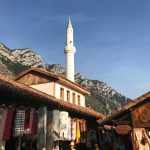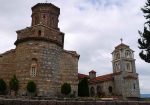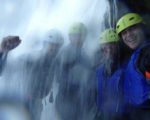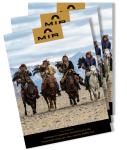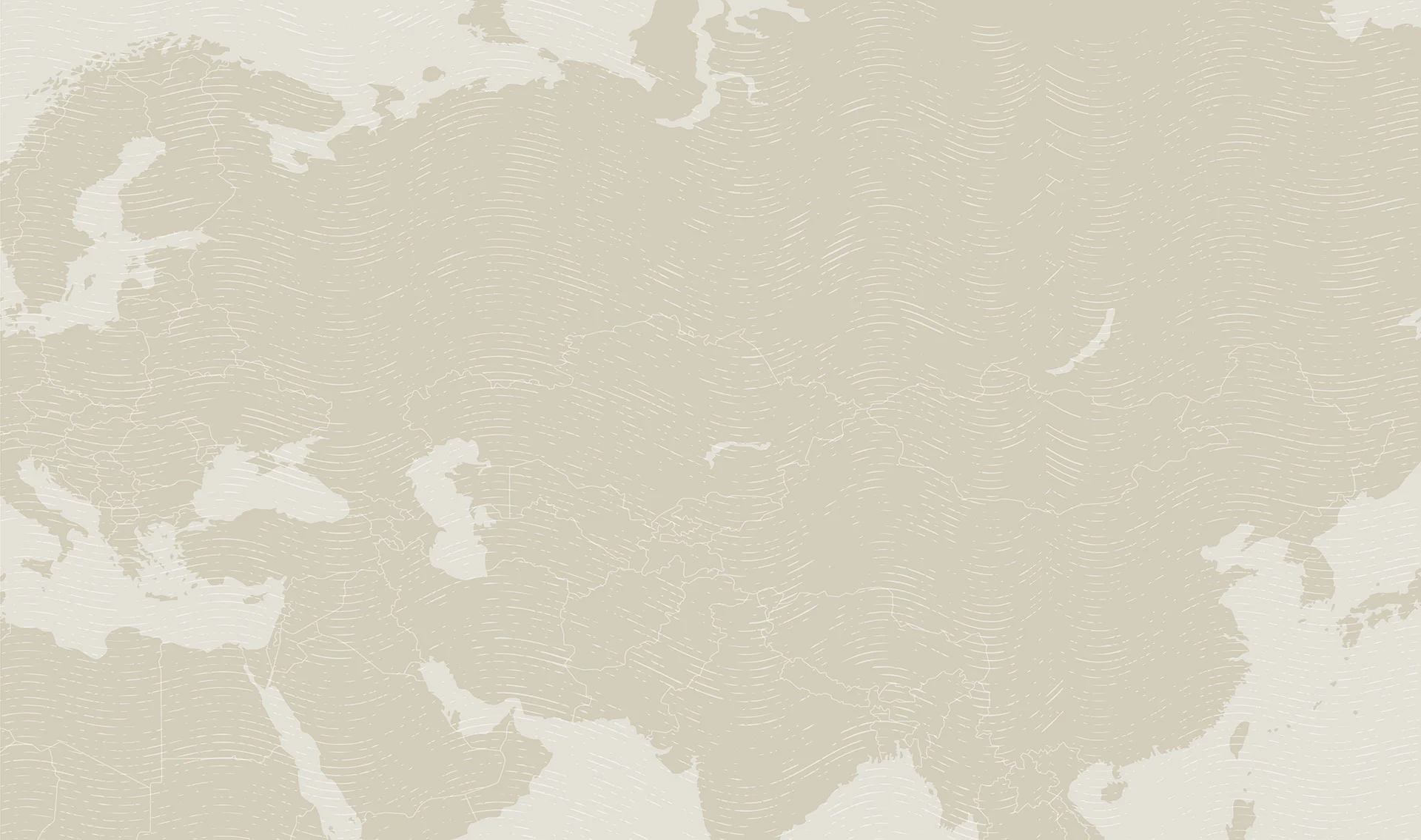Essential Albania, North Macedonia & Kosovo
Photo credit: Peter Guttman
Valleys and Villages of Three Balkan Beauties
Overview
Albania boasts miles of Adriatic and Ionian Sea pristine coastline, as well as spectacular Roman ruins. Land-locked Kosovo has a reputation for exceptional skiing and mountaineering, sophisticated cafés and shops, and a forward-looking young population. And North Macedonia is a compact jewel of a country, blue with lakes and green with forested mountains. Visit all three – from mountains to sea – on this 10-day tour across the little-traveled, yet fascinating southern Balkan Peninsula.
Travels to: Albania, Kosovo, North Macedonia

Map
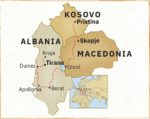
Itinerary
-
Days 1-3: Tirana (Albania), Kruja

Begin your tour in Tirana, Albania’s capital, exploring Skanderbeg Square in the city center. Take a day trip to Kruja to see its fortress, marking the last stand before Albania fell to the conquering Ottoman Turks in 1478.
HIGHLIGHTS
- Albania’s capital, brightly-painted Tirana
- Skanderbeg Square, named in honor of the national hero responsible for defeating the Ottomans
- Et’hem Bey Mosque and its rare frescoes
- Bunk’Art, a contemporary arts and culture center housed inside a massive, five-story underground atomic shelter
- Kruja’s fortress, ethnographic museum, and medieval Turkish bazaar
- Visit to a local workshop where craftspeople create traditional Albanian skullcaps called qeleshe, made from a single piece of felt
-
Days 4-5: Durres, Apollonia, Berat

In Durres, Albania’s second-largest city, visit the Roman amphitheater and ancient baths dating from the days of Emperor Hadrian. Explore the ruins of ancient Apollonia, built as far back as 558 BC. Arrive in Berat, situated on one of the oldest continuously inhabited sites in Albania. The town reflects its dual Ottoman roots and Albanian heritage. Here, examine the outstanding collections of the Onfuri Museum, featuring gilded icons and liturgical objects created by Albanian artists from the 16th to 20th centuries.
HIGHLIGHTS
- Durres and its Roman amphitheater – largest in the Balkans
- Ruins of the ancient town of Apollonia, built as far back as 558 BC and surrounded by a Roman wall
- 13th century Byzantine church and monastery of Shen Meri (Saint Mary), overlooking the ruins of a Roman bath
- Berat, with one of the Balkans’ best-preserved medieval citadels, towering above the Old Town
-
Day 6: Ohrid (North Macedonia)

Situated on Lake Ohrid in North Macedonia, this town by the same name is one of the oldest human settlements in Europe; together they are a UNESCO World Heritage Site. Ohrid’s St. Pantaleon Monastery is the oldest Slav monastery in the world, while the 11th-century Church of St. Sophia boasts well-preserved medieval frescoes. Visit the archaeological site of Plaoshnik, featuring the painstaking reconstruction of 9th-century St. Clement’s Church, faithfully rebuilt according to its Byzantine architectural plans. Discover the monastery of St. Naum, founded in 900 by a student of the Macedonian monks Cyril and Methodius.
HIGHLIGHTS
- UNESCO-listed Ohrid, North Macedonia, with its antiquities, red-roofed old houses, and resplendent collection of medieval icons
- Icon Gallery of Ohrid, tracing the evolution of artistic sacred styles from the 11th to 19th centuries
- Painstaking, faithful reproduction of St. Clement’s Church, first constructed in 893
- 10th century monastery of St. Naum, a student of Macedonian monks Cyril and Methodius
- Old Town farmers’ market
-
Days 7-10: Skopje, Pristina (Kosovo)

On the drive to Skopje today, stop along the way at the hillside Monastery of Sveti Jovan Bigorski, or St. John the Baptist. North Macedonia’s capital and largest city, Skopje is where Saint (Mother) Teresa was born and raised. Before touring Skopje, take a day trip to Pristina, the capital of Kosovo – the Balkan territory that declared independence from Serbia in 2008. Admire the 14th-century Church of the Holy Virgin on the grounds of the Gracanica Monastery, one component of the UNESCO World Heritage Site of the “Medieval Monuments in Kosovo.” Meet and talk with a local family of Kosovan Albanians to learn what life was like during the war years. Next, explore Skopje, browsing the largest bazaar in the Balkans to find hand-loomed carpets, antique silver, spices, woven pillows, and nargileh (water pipes). Visit the Memorial House of Saint Teresa (formerly Mother Teresa), built over the site where she was baptized nearly 100 years earlier. Stroll along Macedonia Square, taking note of the prominent white fountain topped with a massive eight-story figure of Alexander the Great mounted on his equally massive steed.
HIGHLIGHTS
- Macedonia’s capital and largest city, Skopje, where Saint (Mother) Teresa was born and raised
- Pristina, capital of Kosovo, the Balkan territory that declared independence from Serbia in 2008
- Bill Clinton Boulevard, with its 10-foot statue of the former U.S. president
- UNESCO-listed 14th-century Church of the Holy Virgin, located on the grounds of Serbian Orthodox Gracanica Monastery
- Meeting with local family of Kosovan Albanians
- Skopje Old Bazaar and Old Stone Bridge, built by Mehmet the Conqueror Memorial
- House of Saint (Mother) Teresa
- Macedonia Square, with its massive equestrian statue of Alexander the Great
Dates & Prices
Please note:
- Private trip prices vary by season and are subject to hotel availability for your travel dates.
- Listed prices below are based on double occupancy and a 2-traveler minimum.
- Hotel upgrades, additional nights, and solo traveler prices are available on request.
Land tour price, per person, starting from:
Call for dates and prices
What's Included
-
Tour Includes
- Shared accommodations in well-located superior tourist class hotels throughout the itinerary.
- Meals, as noted in the itinerary: breakfast daily. Lunches and dinners are independent to allow exploration.
- Local guides in each city.
- One arrival and one departure transfer. (Additional arrival and departure transfers are available at additional cost.) MIR arranges for travelers to be met on arrival and seen off on departure whether we make your airfare arrangements or not.
- Transportation throughout itinerary by private van or car (type of vehicle depends on the size of your party).
- Guided sightseeing tours and entrance fees as outlined in the itinerary.
- Complete pre-departure electronic document that includes detailed packing suggestions, reading list links, country-specific information, maps, travel tips and more.
- Assistance booking your custom flight arrangements (on request; please note that international air-fare is not included in the land tour cost).
- Touring with MIR handbook with country-specific information, maps, and travel tips.
- Electronic final update bulletin, with any late news, updates and important information.
-
Not Included
- International airfare or taxes/fuel surcharges.
- Meals not specified as included in the itinerary.
- Single supplement charge, if requested or required.
- Baggage handling.
- Items of a personal nature (phone calls, email, laundry, alcohol, excess baggage, etc).
- Gratuities to local guides and drivers.
- Visa/passport fees, airport departure fees.
- Expenses incurred as a result of delay, modification or extension of a tour due to causes beyond MIR’s control.
- Travel and trip cancellation insurance.
Activity Level
-
Level 2: Moderate, but Customizable
Level 2: Moderate, but Customizable
This ‘Essential’ itinerary through Albania, North Macedonia, and Kosovo, which is designed for private travel, features long days walking and standing, and some possibly long days in the touring vehicle. Only those fit to travel and who accept the local conditions should consider joining this program.
There is a significant amount of touring on foot, and those travelers planning to take the program as written should be able to walk one to two miles a day comfortably. Footing can be an issue and travelers should be able to negotiate cobblestones, uneven surfaces (possibly steep and/or wet), and deal with situations without handrails or ramps. In the hotels, you may find that showers/baths have steep steps up or ledges, which can become slippery and require extra caution. Some attractions are only accessible via steep staircases. Museums rarely have elevators, and hotels may not have elevators as well.
Past travelers have also encountered challenges with plumbing, bureaucratic service, variety of locally available foods, and availability and quality of public restrooms.
Accommodations in the basic program are generally three to four-star hotels, some quite small with basic amenities and services. Upgrades may be available, please call for details.
